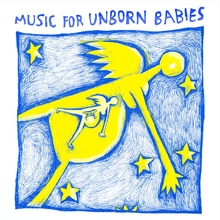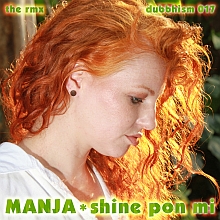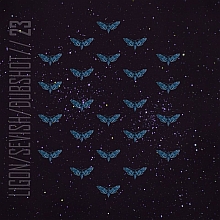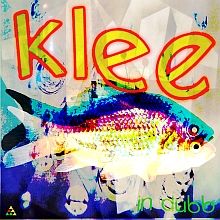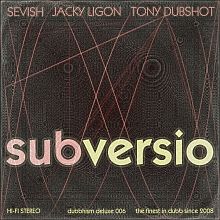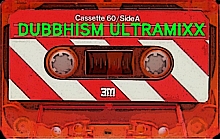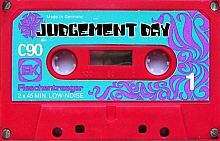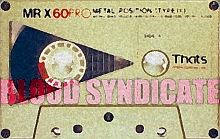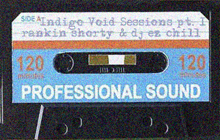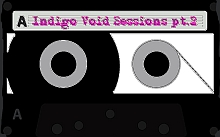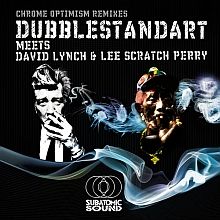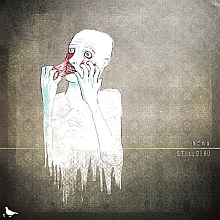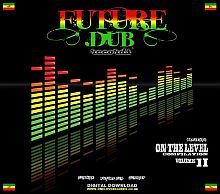
Carl Jung's influence on contemporary astrology is considerable. He introduced new ideas that remain popular, like collective unconscious, archetype and synchronicity. In some sense Jung was also an astrologer, although he didn't do a lot of 'cookbook-astrology'.
Jung preferred to immerse himself in the symbolism of ancient Sun-worshipping cultures. He traced their influence through history, from ancient Egypt and Mesopotamia to the alchemical tradition of the Renaissance. He investigated things like the basic symbolism of the sun and moon, day and night, and how these concepts are related to the conscious and subconscious mind.

Leading astrologers like Liz Greene and Richard Tarnas have incorporated many aspects of Jung's psychological theory in their astrological practice. And recently a few academic studies have been published on Jung and astrology. Liz Greene has written two volumes, published by Routledge in 2018: Jung’s Studies in Astrology: Prophecy, Magic, and the Qualities of Time and The Astrological World of Jung's 'Liber Novus': Daimons, Gods, and the Planetary Journey. In 2017 Routledge also published Jung on Astrology, edited by Safron Rossi and Keiron Le Grice. They're all fine books, but not a single word about asteroids. Why? Whatever... Let's just take a look at C.G. Jung's asteroids.
How to select relevant asteroids
There are more than 21.000 named asteroids. How to find the ones that are relevant to Jung's life and work? There are roughly two methods:
- hints from his autobiography and other literature;
- asteroids conjunct the planets in Jung's birth chart.
First of all, Jung has his own personal asteroid Jung (discovered on 8.4.1991). Jung's autobiography Memories, Dreams, Reflections is a good source for events that can be 'translated' to movements of asteroids. For example, he mentions famous people who have an asteroid named after them, like Freud, Adler, Goethe, Schopenhauer, Plato and Sokrates. In his autobiography, Jung also mentions characters from mythology and from the Bible, like Siegfried (hero-figure in the Red Book), Salome (anima-figure in the Red Book) and Merlin. And he uses keywords like phoenix (related to the coat of arms of the Jung family) and hybris which are also asteroid names.
Method 2
Asteroids that are conjunct planets in a birth chart are considered important. But after we define a certain range as conjunct (for example orb < 1°) we still have to judge subjectively which asteroids in this range seem most important to us. As a rule of thumb, any name that refers to mythology or can somehow be thought of as 'symbolic' is potentially significant, but keep in mind that this is not exact science. Here's a list of some asteroids in Jung's birth chart that seem relevant:
Sun ~ Flegel ~ the element of irreducible rascality (German)
Sun ~ Sanguin ~ fairly hot blooded
Sun ~ Weaver ~ (analyzing) the web of life
Sun ~ Occidental ~ essentially a Western thinker
Sun ~ Astrowizard ~ astrologer
Sun ~ Poisson ~ the fish as 'deep' religious symbol (French)
Sun ~ Vesta ~ Vestal Virgins were keepers of the sacred fire
Sun ~ Arachne ~ see Sun conjunct Weaver
Moon ~ Prisma ~ analyzing the lunar archetype; the unconscious
Moon ~ Herodias ~ mother of Salome, a character in the Red Book
Mercury ~ Ottilia ~ Catholic patroness saint of good eyesight
Mercury ~ Iye ~ mental eye? (related to Horus imagery?)
Mercury ~ Photographica ~ extremely vivid 'visions'
Mercury ~ Mithra ~ judge of souls at the Bridge of Separation
Mercury ~ Europaeus ~ see Sun conjunct Occidental
Mercury ~ Zeeman ~ relevant for his friendship with Wolfgang Pauli
Mercury ~ Adrastea ~ Goddess of the balance between good and evil
Mercury ~ Attila ~ militant mind, conquering a world of knowledge
Mercury ~ Silentium ~ hermit
Venus ~ Odin ~ Germanic God, usually referred to by Jung as Wotan
Venus ~ Minos ~ son of Zeus and Europa, judge of souls (see Mithra)
Venus ~ Pyrrha ~ daughter of Epimetheus and Pandora, creation myth
Venus ~ Plutarchos ~ Greek historian, philosopher and priest at Delphi
Mars ~ Actor ~ action speaks louder than words
Mars ~ Mekistheus ~ ancient Greek warrior-hero
Mars ~ Arthur ~ the legendary King Artur, archetypal warrior-hero
Mars ~ Hiroshima ~ atomic bombs were possibly Jung's greatest fear
Jupiter ~ Letterman ~ man of letters
Jupiter ~ Astrocourier ~ astrologer
Jupiter ~ Brunhild ~ valkyrie responsible for the death of Siegfried
Jupiter ~ Camelot ~ castle and court of King Arthur (Bollingen?)
Jupiter ~ Minerva ~ Roman Goddess of medicine, wisdom, weaving
Saturn ~ Teutonia ~ possibly referring to the 1st and 2nd World War
Saturn ~ Charybdis ~ sea monster, dangerous side of the unconscious
Uranus ~ Leukothea ~ ancient Greek sea-goddess (the unconscious)
Uranus ~ Godiva ~ legendary lady connected to nudity and voyeurism
Uranus ~ Bourgeois ~ épater le bourgeois (provoking the middle class)
Uranus ~ Animoo ~ the Jungian animus/anima
Uranus ~ Gold ~ important metaphor in alchemy
Neptune ~ Fromm ~ piousness, probably about his father (German)
Neptune ~ Jacques Cousteau ~ undersea discovery (the unconscious)
Neptune ~ Prettyman ~ Jung was good-looking, almost glamorous
Pluto ~ Dejanira ~ Greek mythological figure who kills her husband
Pluto ~ Anna Freud ~ Sigmund Freud's youngest daughter
North Node ~ Universitas ~ extremely broad scope and vision
North Node ~ Zeus ~ father archetype, also related to infidelity
South Node ~ Klio ~ Muse of history, points to 'issues' from the past
South Node ~ Aesculapia ~ Greek God of medicine

Analyzing Carl Jung
Let's zoom in on a few remarkable and/or instructive asteroid synchronicities. We'll look at some events related to Jung's famous and fairly trippy "encounter with the unconscious" as described in his Red Book, an elaborate artistic diary. Sources are Jung's autobiography Memories, Dreams, Reflections and the Reader's Edition of the Red Book (which contains many exact dates). Here's a simple example based on only one asteroid to demonstrate how this stuff might work.

The death of Siegfried
Chapter VII of the Red Book is titled 'Murder of the Hero'. The (symbolic) murder takes place in one of Jung's dreams. The date is December 18, 1913. The victim is Siegfried, a mythical hero, who in the dream represents Jung's ego. The death of Siegfried is a key moment in Jung's personal mythology. If you look at the asteroid transits in Jung's birthchart, you'll notice that around December 18 1913, asteroid Siegfried is crossing Jung's natal Mars, the God of War.
"On the following night, however, I had a vision. I was with a youth in the high mountains. It was before daybreak, the Eastern sky was already light. Then Siegfried's horn resounded over the mountains with a jubilant sound. We knew that our mortal enemy was coming. We were armed and lurked beside a narrow rocky path to murder him. Then we saw him coming high across the mountains on a chariot made of the bones of the dead. He drove boldly and magnificently over the steep rocks and arrived at the narrow path where we waited in hiding. As he came around the turn ahead of us we fired at the same time and he fell slain. Thereupon I turned to flee, and a terrible rain swept down. But after this I went through a torment unto death and I felt certain that I must kill myself, if I could not solve the riddle of the murder of the hero. Then the spirit of the depths came to me and spoke these words: "The highest truth is one and the same with the absurd."
How very true! If we take this asteroid synchronicity serious, it challenges all popular concepts of time, causality and fate. We'll have to adjust our reality-tunnels to allow for the fact that asteroid 15147 Siegfried was discovered on 11 March 2000 and named after Ray M. Siegfried (born 1943), chairman of the board of the aerospace NORDAM Group. (The name was suggested by T. W. Rettig.) More thoughts on the retroactive effect of asteroid names over here. Philosophers, scientists, lazy skeptics and conspiracy thinkers... go do your thing ;)
The death of the Mother / Anima / Salome / Toni
Here's another example of the death of a mythical character in Jung's dreams, although we have to add that asteroid Salome was discovered in 1905 ~ which makes it a little less weird.
On January 9, 1923 Jung's mother died. In the night of 23/24 December Jung had a dream about his mother, which he could not interpret successfully until 3 years later, when he wrote: "Only now do i see that the dream of 23/24 December 1923 means the death of the anima." (p.79 Red Book). The anima is another concept developed by Jung; it refers to the unconscious feminine side of the male personality. In Jung's personal mythology, the biblical character Salome, who wished for the decapitation of John the Baptist, refers to his own anima. Looking at Jung's asteroid transits on 23/24 December 1923, it would seem that Salome has a deadly encounter with Pluto, the King of the Underworld. Asteroid 129078 Animoo was discovered in 2004.
Some asteroid transits for C.G. Jung, 23/24.12.1923
Salome conjunct Pluto (0°31')
Animoo sesquare Pluto (0°19')
Animoo sesquare Saturn (0°22')
Animoo quintile Mars (0°32')
Pax biquintile Animoo (0°41')
Jung sesquare Atropos (0°50')
Jung quintile Niobe (1°00')
Jung opposite Jung (0°41')
Klio sesquare Jung (0°46')
Herodias biquintile Jung (1°04')
Herodias trine Animoo (0°07')
Salome sextile Toni (0°37')
Salome sextile Jung (1°28')
Toni sextile Salome (0°35')
Animoo biquintile Herodias (0°31')
Spirit biquintile Herodias (0°34')
Sun sesquare Herodias (0°04')
First mandala
There are many more examples of interesting synchronicities in the Red Book and the autobiography. Try adding asteroids like Freud and Wolfgang Pauli for even more fun. For now we'll end with some asteroid transits related to Jung's first mandala drawing. On January 16, 1916, Jung drew a mandala, a sketch of the 'Systema Munditotius' and he wrote on the back of it: "This is the first mandala I constructed in the year 1916, wholly unconscious of what it meant." (p. 42 Red Book) In this context Plato would mean something like archetypal.
Some asteroid transits for C.G. Jung, 16.01.1916
Mercury trine Fantasia (0°02')
Mercury trine Moira (0°37')
Mercury trine Hybris (0°43')
Mercury trine Sophia (0°49')
Mercury trine Aesculapia (0°55')
Uranus trine Hybris (0°31')
Uranus trine Moira (0°37')
Uranus trine Fantasia (1°16')
Uranus 135 Linie (0°15')
Plato trine Moira (0°03')
Plato trine Hybris (0°09')
Plato trine Fantasia (0°36')
Plato sesquare Linie (0°55')
Hybris trine Moira (0°14')
Hybris trine Hybris (0°20')
Hybris trine Fantasia (0°25')
Hybris sesquare Linie (1°06')
Fantasia biquintile Neptune (0°36')
Fantasia biquintile Mercury (0°39')
Fantasia biquintile Photographica (0°07')
Fantasia biquintile Iye (0°32')
Fantasia biquintile Ottilia (0°46')
Fantasia sextile Mentall (0°23')
Karma biquintile Mercury (0°01')
Karma biquintile Ottilia (0°06')
Karma biquintile Iye (0°09')
Karma biquintile Photographica (0°33')
Linie sesquare Melete (0°09')
Iye biquintile Linie (0°43')
Split conjunct Pandora (0°40')
Split biquintile Fantasia (0°17')
Split quintile Spirit (0°38')
Pandora conjunct Memoria (1°09')
Pandora sesquare Sophia (0°19')
Pandora sesquare Fantasia (1°07')
Moira conjunct Pandora (0°19')
Scheherezade sextile Pandora (0°41')
Nodes square Pandora (0°27')
Photographica conjunct Split (0°31')
Photographica opposite Moon (0°01')
Photographica opposite Prisma (0°13')
Ottilia sesquare Ottilia (0°19')
Ottilia sesquare Mercury (0°26')
Ottilia sesquare Iye (0°33')
Ottilia sesquare Photographica (0°58')
Ottilia biquintile Jung (0°50')
Jung square Prisma (0°51')
Jung square Split (1°09')
Jung semisquare Linie (1°02')
Prisma trine Scheherezade (0°43')
Prisma sesquare Center of Galaxy (0°29')
Prisma quintile Jung (1°04')


